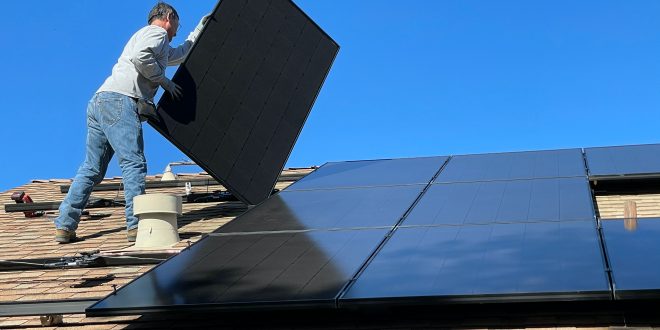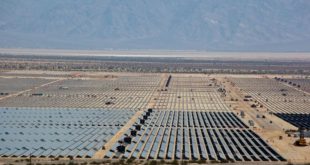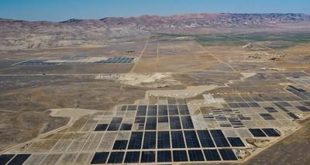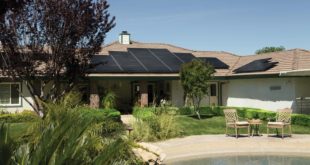The solar power industry hit a remarkable achievement in 2020. According to the International Energy Agency (IAE), solar photovoltaics are now the cheapest way to produce energy in most countries. Solar energy prices have been falling since the technology’s inception, but this is a substantial accomplishment.
Ten years ago, solar was the most expensive energy option, but its cost has dropped by 90% since then. Shifts that dramatic are rare for any technology, so how did it happen with solar power? Here’s how solar power costs have fallen so steeply in such a short time.
Technological Advances
The most straightforward answer behind these plummeting prices is that the technology has improved. Early solar panels were inefficient and expensive to produce, making them unviable for anything but spacecraft. As more people researched and improved solar technology, it became more efficient, making it more cost-effective.
Renewable power has an advantage over fossil fuels in that it’s a technology, not a fuel source. Sunlight is free, so you only have to pay for the devices that harvest it, which become cheaper over time. With fossil fuels, you have to pay for both the technology and the fuel, so their prices are less likely to see dramatic declines.
Coal transportation alone accounts for 20% of total costs to the energy sector. You don’t have to transport solar power, so technological advancements have a far more significant impact on solar energy prices.
Government Incentive Programs
Another driving factor behind solar’s affordability is the prevalence of government incentive programs. If you look at any solar power cost calculator, it’ll likely include expected tax benefits or tariffs. Many governments encourage solar power to reduce the nation’s carbon emissions, making it more affordable.
One study found that 60% of the cost decline for solar power resulted from governments stimulating the market. Tax cuts and tariffs make solar panels more affordable for consumers, who, in turn, put more money into the solar industry. Some governments also fund renewable energy research, speeding the pace of technological advancement.
For example, the U.S. offers a 26% tax credit for qualifying residential and commercial solar installations. Since this program started, solar in the U.S. has grown by 52% a year on average. While other factors also influence that growth, the incentive program is a substantial driver behind it.
Rising Demand
Demand has also played a role in falling solar power costs. As the public becomes more conscious about the need for clean energy, more people have turned to solar. As more money comes into the industry, companies can ramp up production, which is cheaper at scale, and finance further research.
The public’s awareness of climate change isn’t the only driver behind demand, either. Global energy consumption has risen almost every year in the past half-century. The world needs more power sources, and solar photovoltaics provide an ideal solution.
Solar panel cost calculators will show that solar panel installation is still expensive, but lifetime costs are far cheaper than fossil fuels. As more people realize how solar can meet their electrical needs, more invest in the technology, helping the industry become more cost-effective.
Growing Investor Confidence
Finally, investors have grown increasingly confident in solar power’s potential. This confidence leads to increased investment in the sector, driving innovation, which leads to more efficient technologies. As solar power companies become more prominent, they will continue to impress and attract investors.
Solar-adjacent companies like Tesla have played a significant role in this investor confidence. Tesla stock has grown by more than 4,000% since the company became public, catching the attention of many investors. Since the company and its CEO, Elon Musk, are so outspoken about solar power, it brings similar attention to photovoltaics.
Investors, in turn, are more likely to invest heavily in solar power after seeing how much related technologies have grown. This bump in funding fuels further development, making solar even cheaper.
Solar Energy Could Power the Future
Solar power has seen remarkable growth over the past few years. In one decade, solar energy prices have gone from the highest to the lowest in the power sector. As it becomes more affordable, it will only continue to grow.
This impressive growth and increasing affordability make solar a viable option for powering the homes and businesses of tomorrow. The world may be on the verge of a solar power revolution.
 Emily Newton is the Editor-in-Chief of Revolutionized Magazine, an online publication that explores innovations in science and technology.
Emily Newton is the Editor-in-Chief of Revolutionized Magazine, an online publication that explores innovations in science and technology.
 Alternative Energy HQ solar power for homes, wind energy, and bio fuel issues
Alternative Energy HQ solar power for homes, wind energy, and bio fuel issues







